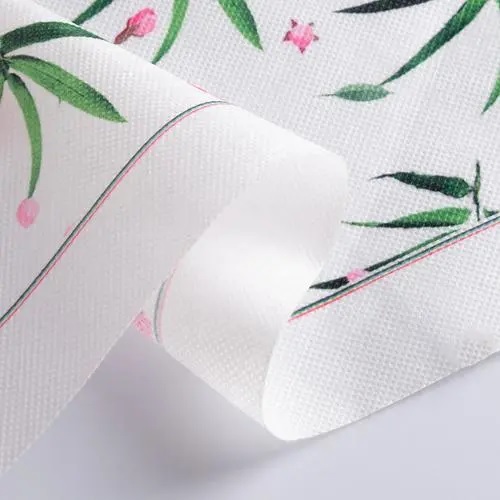
Privacy statement: Your privacy is very important to Us. Our company promises not to disclose your personal information to any external company with out your explicit permission.
Mr. Hua Mao
What can I do for you?

In the processing and printing process of Non Woven Fabric Roll, in order to reduce the printing process flow of Non Woven Fabric and improve the printing quality, simplifying the printing process flow is an important way to reduce the manufacturing cost of products. This article details some methods of the process flow of non woven fabric in production and printing!
The Nonwoven Fabric printing process mainly adopts two process methods: online dyeing and offline dyeing.
Online dyeing process: loose fiber → opening and cleaning → carding → spunlace → foam dyeing (adhesives, coatings and other auxiliaries) → drying → winding. Among them, the advantage of using foam dyeing is that it can save energy, but it has the disadvantage of uneven dyeing.
Offline dyeing process: spunlace nonwovens → feeding → padding (adhesives, coatings and other auxiliaries) → pre - baking → tenter drying or tumble drying → winding.

Non woven printing process:
If printing, the color paste prepared from paint, adhesive, corresponding auxiliaries, and water needs to be added with a thickener to increase the viscosity, and the color paste is printed on the Non Woven Filter Fabric by a roller printing machine, and is glued during the drying process. The agent self - crosslinks to fix the color paste on the Filter Fabric Non Woven.
Taking the non woven production line as an example, the online printing process is: loose fiber → opening and cleaning → carding → spunlace → dipping → printing ( paint and auxiliaries ) → drying → winding. Among them, the dipping process can use the padding ( two - dipping and two - rolling) method, or the foam impregnation method. And some factories do not have this process, which is mainly determined by the customer ' s requirements for product quality and application fields.
Using the method of coating and binder, the dyeing / printing process is short, high efficiency and low cost, which can fully meet the requirements of related application fields. Moreover, the method is simple and easy to implement. It is suitable for various fibers and has low energy consumption and is beneficial to environmental protection. Therefore, except for some special products, most non woven Filter Cloth Material production plants use the pigment dyeing / printing method.
The nonwoven fabric printing process includes many complex process technologies, and printing is a very important step in the process of processing semi - finished products to finished products. Simplifying the printing process of non woven fabric can not only improve the printing quality of non woven fabric, but also improve the tensile strength of nonwoven Filter Cloth.

Privacy statement: Your privacy is very important to Us. Our company promises not to disclose your personal information to any external company with out your explicit permission.

Fill in more information so that we can get in touch with you faster
Privacy statement: Your privacy is very important to Us. Our company promises not to disclose your personal information to any external company with out your explicit permission.